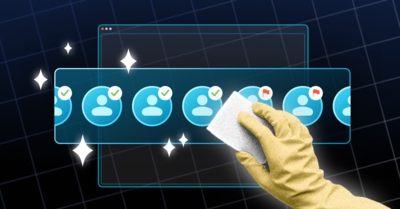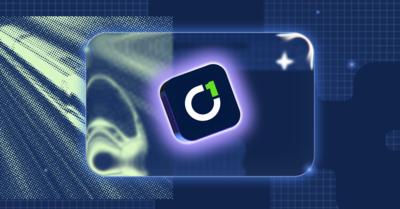In today’s rapidly changing digital landscape, managing Identity and Access Management (IAM) is more critical than ever. 77% of security leaders reported instances of cyberattacks or data breaches at their organization in the past 12 months due to improper access or overprivileged users, according to ConductorOne’s 2024 Identity Security Outlook Report. While the risk is known, most enterprises are just beginning their IAM hygiene journey, with the initial goal to achieve visibility and clean up glaring access risks. This journey can be challenging, but you can significantly enhance your organization’s security posture with incremental IAM improvements. Here are our top five tips for improved IAM hygiene:
1. Gain visibility and control
The first step in improving your IAM hygiene is to gain visibility into your existing IAM infrastructure. Without a clear view, you can’t manage or secure what you don’t know exists. Begin by cataloging all identities, including employees, contractors, partners, and service accounts. Utilize tools that provide comprehensive visibility across your entire ecosystem, including cloud and on-premises environments.
Specifically, look for:
- Orphan accounts: Accounts that are no longer associated with an active user
- Dormant accounts: Active accounts that haven’t been used for a significant period
- Misconfigurations: Incorrect or overly permissive access settings, accounts without MFA
Start with applications that handle sensitive data, such as financial systems, HR platforms, and customer databases. These are often well-positioned for automation and have the most significant impact on security if compromised.
2. Automate provisioning and deprovisioning
Manual processes for provisioning and deprovisioning accounts are prone to errors and inefficiencies. Automation can help you ensure that accounts are created with the correct permissions and deactivated promptly when no longer needed. This not only improves security but also reduces administrative overhead. Tools that integrate with your HR system can automate the joiner, mover, and leaver processes, ensuring that access is granted appropriately and revoked when necessary.
Specific actions include:
- Implementing workflows for automatic account creation and deletion
- Integrating IAM tools with HR systems for real-time updates
- Regularly reviewing and updating automated processes to adapt to organizational changes
3. Enforce zero standing privileges
A more advanced approach to IAM is enforcing zero standing privileges (ZSP). This principle ensures that no user or system has standing access to critical systems and data. Instead, access is granted on a just-in-time (JIT) basis, and only for the duration needed to complete a task. This minimizes the blast radius and significantly reduces the risk of privilege misuse or escalation.
To enforce ZSP effectively:
- Implement JIT access provisioning, allowing temporary access to critical systems.
- Use privileged access management (PAM) solutions to control and monitor privileged access.
- Regularly review and adjust access policies to ensure they align with the ZSP approach.
4. Implement strong authentication mechanisms
Robust, risk-appropriate authentication is crucial for securing your IAM infrastructure. Multi-factor authentication (MFA) should be mandatory for accessing sensitive systems and data. Additionally, ensure that your authentication methods are consistent across the enterprise to avoid weak points in your security posture. Regularly review and update your authentication policies to keep up with evolving threats.
Steps to enhance authentication include:
- Deploying MFA across all critical systems and applications
- Ensuring consistent authentication practices enterprise-wide
- Regularly evaluating and updating authentication mechanisms to address new security challenges
Related: At ConductorOne, we rolled out passkey authentication for 100% of our team to strengthen security. The percentage of accounts that are protected by strong MFA is a useful success metric for security initiatives.
5. Gain executive buy-in and line-of-business alignment
Achieving good IAM hygiene requires support from the entire organization — executive buy-in and clear lines of impact on business goals are paramount. Communicating how strong IAM practices contribute to risk reduction and overall security to line-of-business owners is key to improving and maintaining IAM hygiene.
Actions to consider:
- Educate executives on the importance of IAM and its role in risk management.
- Develop a clear IAM strategy aligned with business objectives.
- Foster collaboration between IT, security teams, and business units.
Related: IGS rolled out ConductorOne with a tiered use case approach to address the most pressing security challenges without burdening the rest of the team.
“ConductorOne proved that their solution improves our business function, provides quick time to value, and helps us achieve better security outcomes.”
A note on process improvements and organizational changes
Improving IAM hygiene isn’t just about technology; it involves process improvements and organizational changes. Establish documented policies and procedures for IAM tasks and ensure they are consistently followed. Regular training and awareness programs can help embed IAM best practices within the organization. Lastly, don’t underestimate the importance of the end user experience and its impact on adoption.
Conclusion
Cleaning up your identity and access infrastructure is a continuous process that requires attention to detail and a proactive approach. By gaining visibility, automating processes, enforcing zero standing privileges, implementing strong authentication, and aligning IAM efforts with business goals, you can significantly enhance your organization’s security posture.
At ConductorOne, we specialize in helping organizations streamline and secure their IAM infrastructure. Contact us today to learn how we can help you implement these strategies and more.





